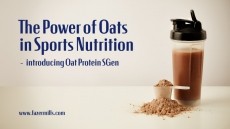CRN authors risk assessment for key amino acids
arginine, has been authored by the CRN, providing industry and
consumers with important information on safe dosage levels.
The risk assessment provides companies with a guide for safe upper levels for product formulations, and consumers with vital information on safe dosage levels from products. "Over the last decade the prevalence of amino acids within sports nutrition supplements and 'energy boosting' functional foods and beverages has significantly increased. We chose to assess the safety of taurine, glutamine and arginine because they are among the most widely used and studied of the supplemental amino acids," said co-author Andrew Shao, PhD., vice president of scientific and regulatory affairs for the Council for Responsible Nutrition (CRN). The authors applied a safety evaluation method as described in the CRN's Vitamin and Mineral Safety, 2nd Edition which contains the basic features of the US Food and Nutrition Board's risk assessment method, as well as the observed safe limit (OSL) modification adopted as a highest observed intake (HOI) in the FAO/WHO 2006 report. The absence of any critical effects prevented the expression of the limits as no observed adverse effect levels (NOAEL) or lowest observed adverse effect level (LOAEL). Values were presented as OSLs. Writing in the journal Regulatory Toxicology and Pharmacology, Shoa and John Hathcock, PhD., state: "The OSL risk assessments indicate that based on the available published human clinical trial data, the evidence for the absence of adverse effects is strong for taurine at supplemental intakes up to three grams per day, glutamine at intakes up to 14 g/d and arginine at intakes up to 20 g/d, and these levels are identified as the respective OSLs for normal healthy adults." They also stated that, although no adverse effects at higher levels have been reported in some studies, the data supporting intakes above the OSLs were "not sufficient for a confident conclusion of long-term safety, and therefore these values are not selected as the OSLs." Risk assessment series Hathcock and Shao have been busy filling in the gaps for a range of micronutrients, and the new assessment follows Co-Q10, creatine, carnitine, lutein and lycopene, and glucosamine and chondroitin sulfate and in the same journal. "CRN is dedicated to helping ingredient manufactures deliver the safest products possible to consumers, and risk assessments are the best indicators we have to establish upper limits," said Dr. Hathcock. "These risk assessments, using our expansions of the UL method, represent the first time upper intake levels have been identified for amino acids. As amino acids continue to be more widely used by the general public, there needs to be a scientific method for establishing safety. It is important that we don't allow for a non-scientific approach such as the use of a random multiple of the recommended daily allowance," he added. More information about the other risk assessments can be found: Co-Q10, creatine, lutein and lycopene, carnitine, and glucosamine and chondroitin sulfate. Source: Regulatory Toxicology and Pharmacology April 2008, Volume 50, Issue 3, Pages 376-399 "Risk assessment for the amino acids taurine, L-glutamine and L-arginine" Authors: A. Shao, J.N. Hathcock












